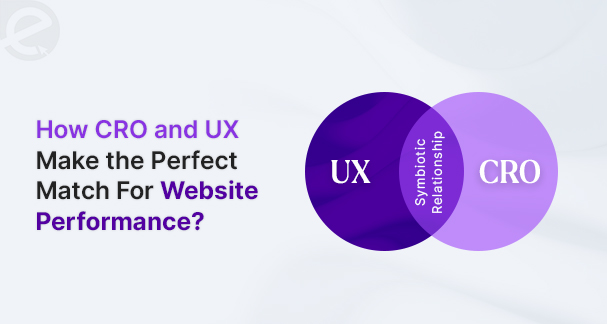
We Develop Websites Keeping Marketing in Mind
How Does Mobile App Development Differ from Web App Development?
 Feb. 26, 2024, 12:00 AM
Feb. 26, 2024, 12:00 AM- By Eclick Softwares and Solutions

Analyzing how web apps and mobile apps function on the market and how they are being used states how both are serving to reach slightly various audiences and achieve the respective business goals. The businesses navigating the online interaction realm have to decide between Mobile App Development vs. Web App Development. Both these approaches necessitate a strategic evaluation for determining the ideal working path to seamlessly align with the unique business goals as well as user engagement objectives. Compared to Web Apps, Mobile Apps have a lot more advanced security. So, the app developers have to create two-factor authentication and other related means for enhancing safety.
How Do Web Apps Differ From Mobile Apps?
We shall now assess the key differences between Mobile Apps and Web Apps in some detail.
A Brief Evaluation of Mobile App Development
Mobile app development is the process of formulating applications specifically designed for running on mobile devices, like Smartphones and tablets. Being directly installed onto the devices, the Mobile apps leverage the features and capabilities of the platform for delivering a tailored user experience. Coding and app designing by using platform-specific technologies and programming languages complete the mobile app development, which is then distributed through App Stores. Then, the users can download and install them on their devices.
Built for iOS and Android platforms, the mobile apps have access to the features of the native device. Often, mobile apps can run without an active internet connection. They are faster, and compared to Web apps, provide a better User Experience. Users have to download the updated versions of the same app using the App Store.
The Types of Mobile Apps
The two types of mobile OS, namely iOS and Android significantly differ in terms of features, services and the environment. Earlier, the developers had developed the same application as two separate applications where each application was released on the appropriate OS. However, the process has advanced – the developers are now creating Hybrid Apps. So, now we have three different types of mobile applications, which are:
Native:
Native application means the application built for serving one OS – either iOS or Android. To develop the native application, the platform's native APIs are used. For other platforms, it's not possible to reuse Code.
Hybrid:
Hybrid applications mean the applications running on any platform – iOS or Android. The application even has access to the native APIs. The app developers can reuse the code on any platform.
Mobile Web:
Mobile web applications mean the web applications browsed through the browser on the mobile. Now that the web applications are developed using the responsive design, the mobile web applications seem like mobile applications. Usually, there are no separate mobile apps for mobile web applications. Users not willing to install a particular mobile application can use mobile web apps.
What is the Working Faculty of Mobile Applications?
Mobile applications have a tendency to lead faster and give a more sophisticated browsing feel to the users. This is how the mobile applications work:
1. While using iPhones, the users have to download the application from the App Store. However, they have to rely on Google Play Stores to download the apps when using Android phones.
2. A certain amount of data and storage space are needed for downloading mobile applications. Once there is enough space in the mobile for accommodating the application, only then can the download process begin.
3. Ultimately, the Mobile application is fully ready to display its contents and deliver its services. In the process, it even provided an enhanced user experience.
The Examples of Mobile Applications:
The popular genres of mobile applications downloaded on a daily basis from the Google App Stores include:
• Lifestyle apps
• Social media
• Game apps
• Productivity apps
• Utility apps
• Entertainment apps
• News
• Educational apps
• Native app
• Progressive Web apps
A Brief Look Into the Web App Development
No user has to download the web apps. They access the web apps via an Internet browser. Working on every system and device, the web apps are adapted to them. Web apps are responsive, hence, they are ideal for both mobile devices and desktops.
Hence for running, an active Internet connection is a must. Web Apps are automatically updated – users need not download.
The Web App development process is focused on creating applications accessed through web browsers. Hosted on servers, these apps can be accessed on different devices having an Internet connection.
Web apps are coded. To develop web apps, the app developers use web technologies like HTML, CSS and JavaScript. Users can access web apps by just entering a URL into the browser, thus doing away with the need to install apps from an app store.
The Functional Procedure of Web Applications
The unique aspect that differentiates web apps from mobile applications is these need not be installed as separate applications on the desktop. These can be accessed via browser through:
1. Using the Internet, the users send a query to the web server through the browser.
2. The server receives the request and prepares to deliver the requested request.
3. Later, the requested information sends results from the web application server to the server.
4. Then, the web server displays the requested information to the user.
The Examples of Web Applications:
Some commonly used web applications include:
• Uber
• Gmail
• Netflix
• MakeMyTrip
• Shopify
• 2048
• Airbnb
• Animated web application
• Canva
• DoorDash
• Portal Web application
• Pwa web applications
• Social media
• Spotify
• BMW
• Forbes
• Soundslice
To summarize the differences between web apps and mobile apps to pitch at the end, a few highlights will make it up. Users can access the web apps virtually using any browser, but the mobile apps should be downloaded from the App Store, which are created just for smaller screens. Hence, implying fewer pixels. But the users can access web apps using both Mobile and desktop. Mobile apps are easy to use while commuting, but for Web Apps, the desktop or laptop has to be placed on a platform. The designers should account for these scenarios for the apps to be of high usability and accessibility standards.
Related Blog
- By Eclick Softwares and Solutions
- November 21, 2024
Why Good UX Design Mean B ...
UX creates a verified impact on CRO for a website. The users ...
Read More- By Eclick Softwares and Solutions
- November 11, 2024
How Important is a Websit ...
Where the customers land and browse to find their needed pro ...
Read MoreSearch Blog...
Recent Posts
Eclick Services







